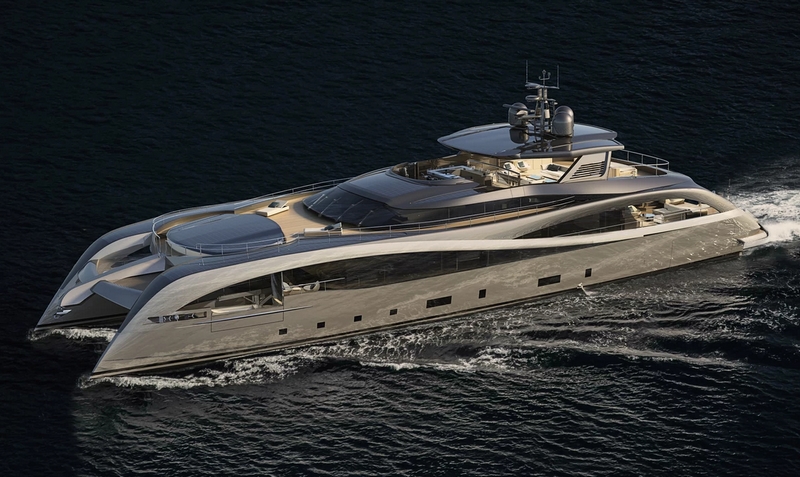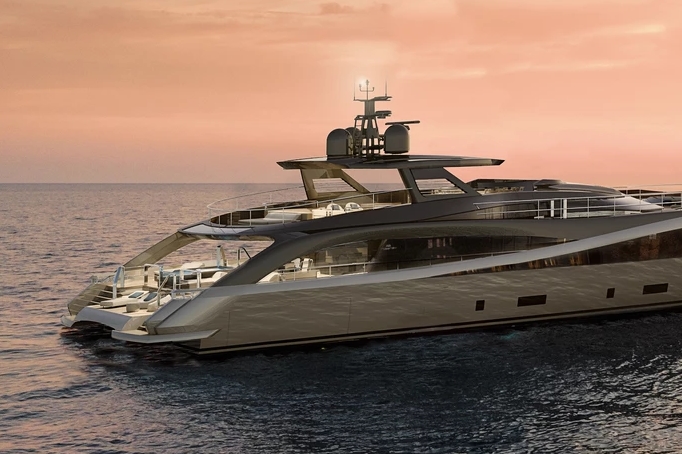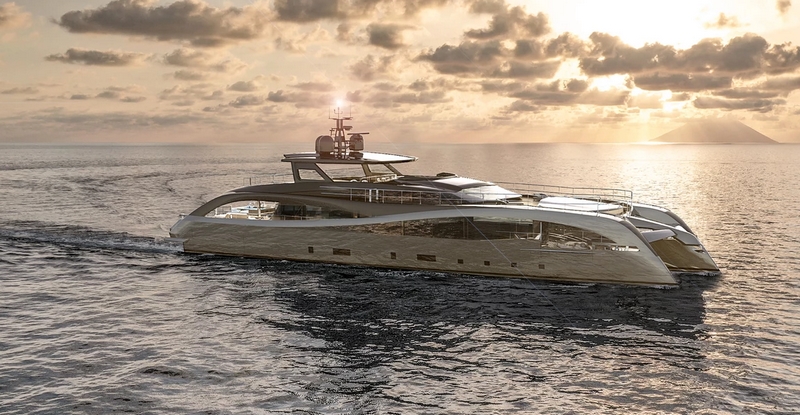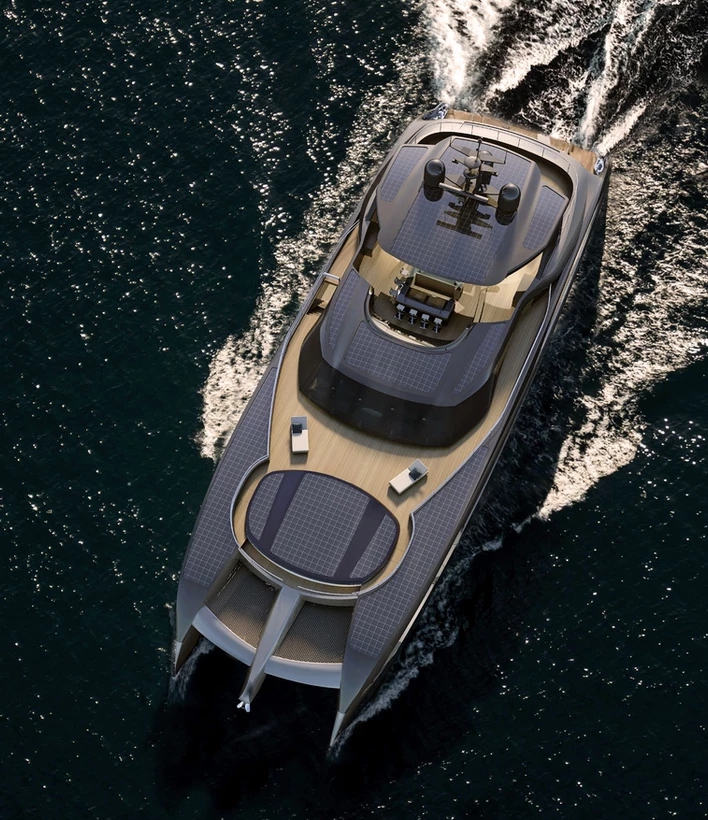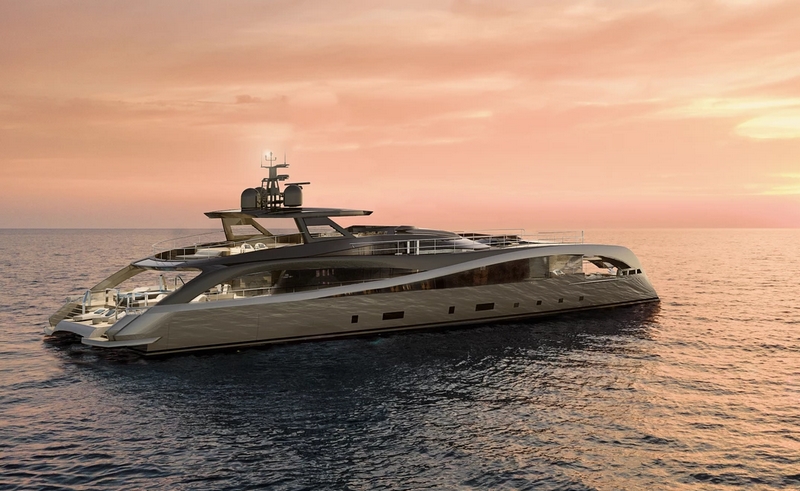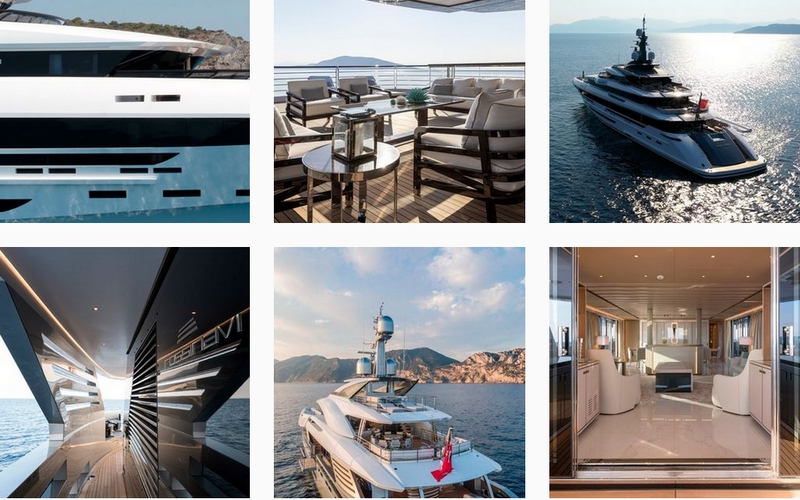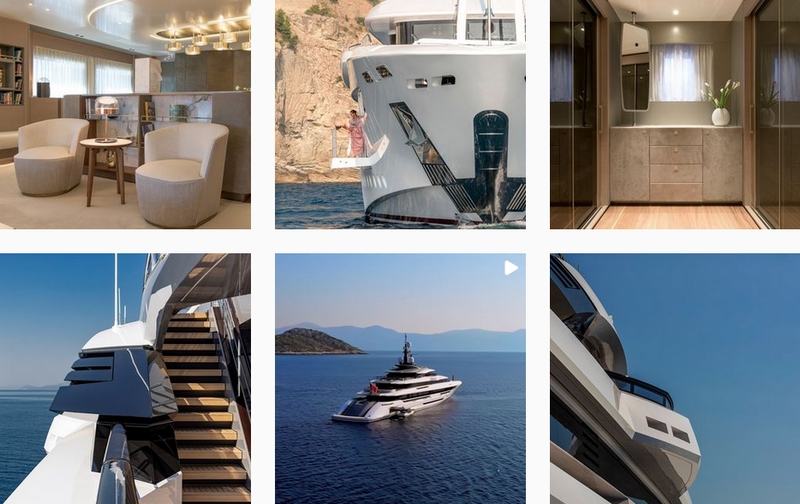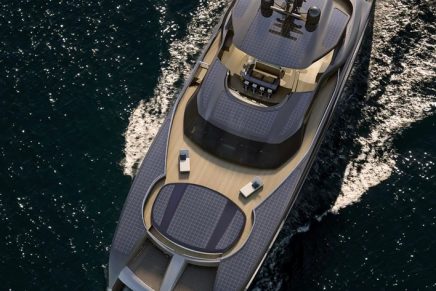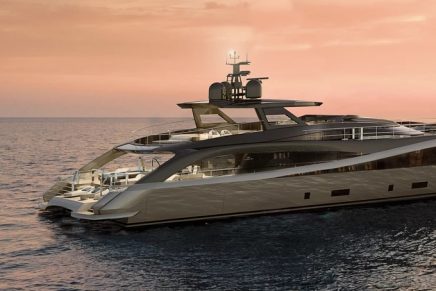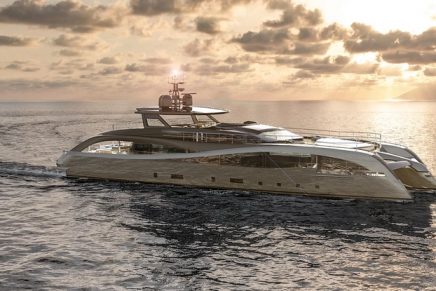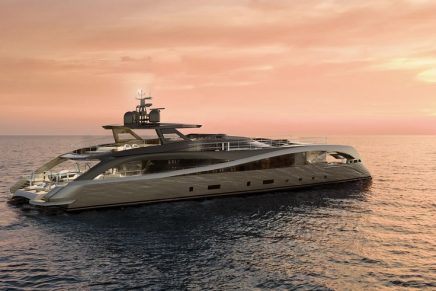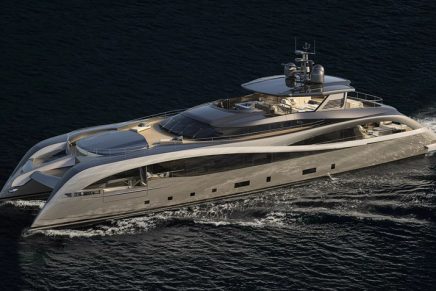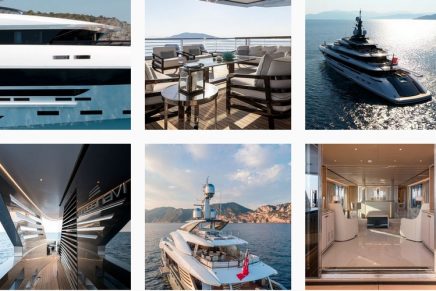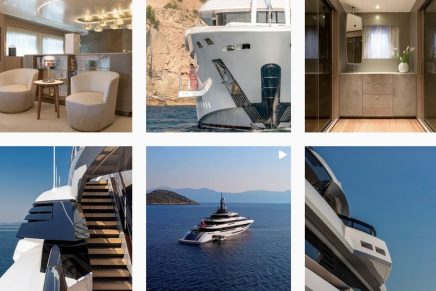With its aluminum hull, futuristic design and green energy consumption solutions, Sea Cat 40 was born to dominate the sea respecting it so that the surrounding nature observes it, welcomes it and supports it. The catamaran is the result of Rossinavis finest engineering and expertise in the shipyard’s constant research towards a more sustainable nautical experience.
Sea Cat is a fully electric catamaran, environmentally friendly, energy-efficient and supported by the most advanced technologies
On the occasion of Miami’s cultural week this month, Italian shipyard Rossinavi presented the Rossinavi Sea Cat 40, a new fully electric catamaran concept, the first one conceived by the luxury yachting brand.
“The idea is to create a link between nature, electricity and futurism. Supported by the most advanced technologies, Sea Cat 40 is able to offer excellent performance while prioritising the environment, a real challenge for the future of boating and a milestone for the shipyard,,” ‘says Federico Rossi, Chief Operating Officer of Rossinavi.
Italian naval architect Fulvio De Simoni has been invited by Rossinavi to develop the exterior and interior architecture of Sea Cat 40 which boasts a modern and elegant design characterised by open spaces, 5 guest bedrooms, one of which is the ship owner’s, and 4 crew cabins for a total of 7 staff members.
The boat’s innovative concept is inspired by phytoplankton, the marine algae that play a fundamental role in the food chain and that live in the oceans’ upper layers where they are able to convert sunlight into energy for their survival. At night, the energy accumulated during the day is released, making phytoplankton bioluminescent.
Similarly, Sea Cat 40 is designed to absorb sunlight during the daylight hours and transform it into energy, taking full advantage of the photovoltaics’ capabilities. The catamaran can store and harness clean energy thanks to its advanced technology solar panels, installed on an area of 135 sqm.
The panels produce up to 250kWh, which is enough to supply the electric consumption of 5 to 6 average American households as well as the electric consumption of a marina. The energy is then transferred from the boat to the living area, making the noiseless cruising experience environmentally friendly, or from the boat directly to a home on the mainland.
In the case of trans-Atlantic crossings, the catamaran can travel for 20 days, covering a distance of 3,850 nm at a speed of 8kn. Sea Cat’s sophisticated AI and centralised control system allows it to maintain the battery status between 40% and 80% so as to preserve the battery and make it last longer. Ocean crossing with Sea Cat aims to have very low environmental impact; the catamaran can be programmed to navigate 80% in full electric mode, using only 20% of diesel electric support. On return trips of 80 nm, for example, the catamaran can operate in a full-electric mode.

